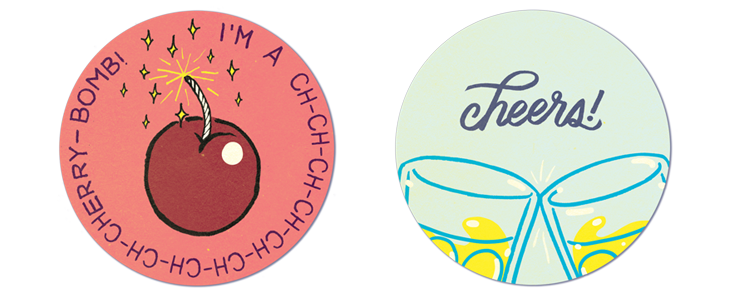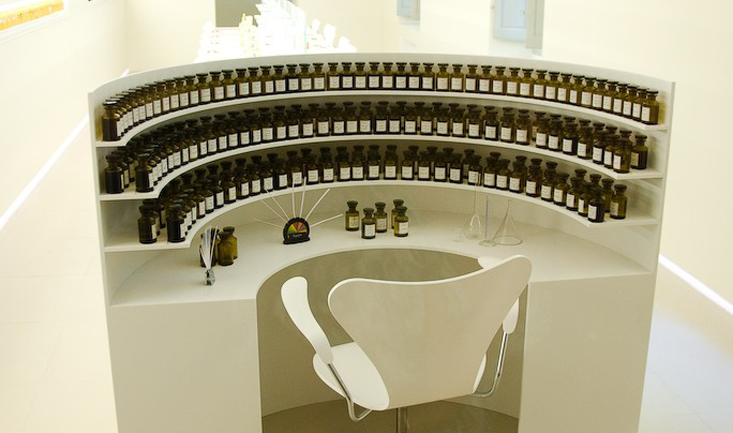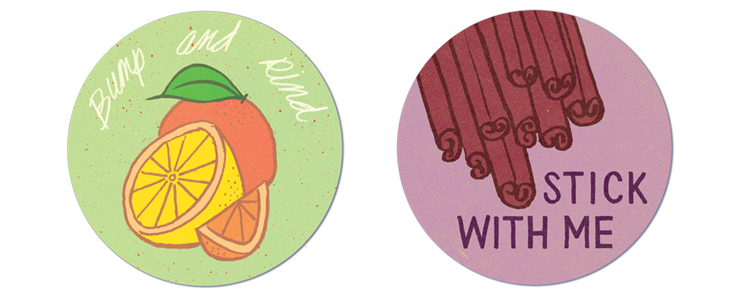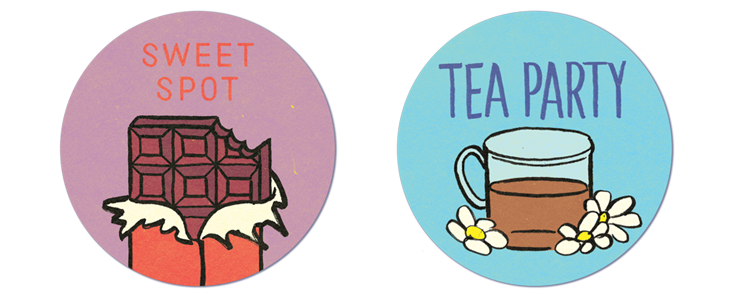Every day, we inhabit a vast and complex brew of odors. Take a walk in New York City, and you’ll pass through aromas of car exhaust, garbage, coffee, baking pizza, flowers, damp soil, cleaning fluid, and urine—all in the space of a few blocks. At worst, the city reeks. At best, all of the scents blend together into something barely noticeable, with the occasional whiff of something delicious. We each live in a world of scents that go unnoticed in the backgrounds of our lives; they hum at the edges of our ability to perceive them. It can be a “big blur,” says Christophe Laudamiel, a French master perfumer who is based in New York and Berlin. It doesn’t have to be. “If you are trained, if you are an expert, you can discern things in the noise that you don’t discern if you haven’t practiced before.”
When Laudamiel walks around New York City, he says, the city’s many aromas don’t just blend together into something inscrutable. He smells hints of wood and green bell peppers in a cup of coffee, tuna cans in a glass of bad cabernet, spinach in fine green teas at the market, and notes of freesia and mushrooms in Central Park in the morning. “Once the brain has seen something, it can recognize it in other places,” he says.
That’s a phenomenon I can attest to: As a perfume lover who has spent the past few years smelling hundreds of different fragrances, I can now identify and understand odors that would have barely registered before. It’s led me to see perfumers—and the fragrances they create—as a window into learning about the olfactory system, our least understood sense. They show how our sense of smell is capable of much more than we typically ask of it.

Laudamiel is getting ready to launch his own line of perfumes. He has heavy competition: There were over 1,500 perfumes launched last year alone. But many of those perfumes, he argues, are just copies or remixes of other fragrances. “People think they don’t know how to smell, because everything smells the same,” he says.
For his brand to be successful, he needs to cultivate an audience of aesthetes. “I know that if people are more educated, like with chocolate or whiskey, then the industry becomes more interesting,” he says. When customers are motivated to distinguish smells from one another perfume makers will be obliged to offer more variety. But building a discerning audience for fragrance is challenging: It’s difficult to both create and perceive clear signals.
Our sense of smell is notoriously imprecise. Many people have a hard time recognizing and naming even basic odors. “The sense of smell is not built to identify things; it’s built to classify things,” says Johan Lundstrom, an olfactory psychologist at the Karolinska Institute in Sweden. “We’re quite good at saying ‘this is a flowery perfume.’ But going from there to saying ‘this is Chanel No. 5’ is really difficult.” Analyzing Chanel No. 5’s many ingredients is even harder, as is describing it with our very limited language for smells. But science also shows what perfumers know from experience: Our noses have an amazing ability to distinguish different smells—when we pay attention.
While the retina in your eye, for instance, uses a mere three types of cone cells (blue, green, and red) to detect the full range of colors, your nose needs a more complex system to detect different smells. There are an unknown number of odor molecules—chemicals that escape into the air from their sources—that we are able to detect with smell receptors in the lining of our noses. Humans have about 400 different smell receptors, each of which may respond to several odors, while each odor molecule may bind to several receptors and activate the nerve cells carrying those receptors to different degrees.

Scientists still have no consistent way of predicting how a molecule will smell based on its structure, much less how a stew of odors will smell. This complexity makes composing a perfume more challenging than mixing colors of paint or layering musical notes.
Perfumers use a palette ranging from a few hundred up to 2,000 ingredients that range from a single molecule to natural oils that may contain dozens of odor molecules. “Each molecule comes with baggage,” says Laudamiel. “An apple-y note can smell of apple, but it can also smell of vomit.” A natural chemical called cis-3-hexenol smells of fresh cut grass, but at too high a dose can smell like a harsh solvent. Often when he adds one ingredient to a mix, Laudamiel must add something else to mask an unwanted effect. Each new ingredient alters the whole.
Perfumery is less a science than a storehouse of knowledge and experience. Perfumers create iteratively, first adding ingredients and then “balancing” them (finessing the concentrations and masking unwanted odors). It’s like constructing a house of cards, Laudamiel says: “You change one thing and then your whole fragrance collapses.”
In the end, a perfume can contain 50 or more different ingredients at specific concentrations. And yet a perfume with 100 ingredients may not necessarily smell more complex than one with 10. Our olfactory system tends to combine mixtures of scents into a single odor. “If I’m inhaling a bunch of molecules at the same time, the olfactory system likes to put those molecules together into an object,” says Donald Wilson, a neuroscientist at the New York University School of Medicine. The ability to deconstruct an object into its component parts is an analytic process (for instance, you can visually analyze the shapes of each letter on a screen). Smell, on the other hand, is often considered to be synthetic; a scent is perceived as the sum of its parts. Since most odors are complex molecular mixtures, it makes sense that the brain would blend parts into a whole—it’s more important to smell an apple as an apple than as a cocktail of airborne chemicals.

Studies conducted in the 1990s asked people to identify odor molecules in random mixtures; many could distinguish the individual components of odor pairs, but as the mixtures became more complex, it was much harder to identify each one. There are exceptions: Some sulfur compounds, for instance, are so potent to our noses that they always pop out. But in general, after a smell reaches three or four components, its complexity dissolves into something indistinguishable.
That applies even to trained experts. “Even if the [perfume] formula has 50 ingredients, when I smell it right now, I’m going to see like four, five, six different things,” says Laudamiel. He might be able to pick out more ingredients as the fragrance changes over time and the most volatile molecules disappear. He can also infer ingredients knowing that a certain recipe creates an olfactory effect.
“You change one thing and your whole fragrance collapses.”
Ron Winnegrad, a perfumer and instructor at the International Flavors & Fragrances perfumery school in New York, says perfumery students spend their first months of training learning to identify and describe about 300 core ingredients, alone and in mixtures; eventually, they’re asked to deconstruct an entire perfume by sniffing out a few ingredients at a time. And this ability requires maintenance. “I feel the perfumer should be practicing his whole career,” he says.
Most odors, from coffee to a rose to a perfume, are made up of tens to hundreds of different odor molecules, only some of which may get sucked into the nose in a particular sniff of the air. We make sense of this incomplete information through a process of pattern recognition, much like you can recognize a face in a grainy image. Pattern recognition helps perfumers: They might use rose oxide, a chemical found in roses, rather than expensive and more complex rose oil, because our noses still recognize the pattern of “rose.”

Categorizing and naming unfamiliar patterns, not to mention creating them, is harder. A 2012 study, led by Noam Sobel at the Weizmann Institute of Science in Israel, found that mixing many odors together can achieve something like white noise—they call it “olfactory white.” The study tests a fundamental aspect of smell: As odors are combined into large mixtures, do they tend to converge on a similar perception, or do they diverge into different smells? The answer can tell us something about how we make sense of increasingly complex inputs.
His team asked people to distinguish between mixtures of many odors that were carefully calibrated to have equal smell intensities and to span the different types of odors that humans can smell. They began with pairs of smells and built up to larger mixtures. Once they reached about 30 components, the mixtures began to smell the same. The researchers then created 40-component mixtures, which they labeled with the nonsense word “Laurax.” After smelling these mixtures, subjects tended to assign the name Laurax to other large mixtures with different ingredients. Although olfactory whites didn’t smell like any identifiable odor, a professional perfumer was asked to describe them, and came up with words like cinnamon, vanilla, butter, and cherry candy; the test subjects also rated olfactory whites as generally pleasant and edible-smelling.
“If I say there is leather and saffron, you are going to smell leather and saffron.”
The study suggests that as more ingredients are blended, mixtures become more alike. Perfumes can have more than 30 or 40 ingredients, but they’re designed to highlight certain ingredients over others. A smell that’s equivalent to olfactory white can be found in the air in perfume labs, or in the discard bins where perfumers dump all the fragrances they’ve been working on when they’re finished. I once sniffed a bucket like this at a perfume lab, and it smelled like everything and nothing in particular— vaguely fruity, like a disembodied strawberry.
But while the olfactory white mixtures in Sobel’s study were all classified as “Laurax,” that doesn’t mean they smelled exactly the same. We call lots of paint colors “white,” yet can tell the difference between slightly different shades. The same is true for smells. Though humans are bad at identifying and describing smells, we are much better at distinguishing one from another.
Leslie Vosshall, a neurobiologist at Rockefeller University in New York, has been playing around with shades of olfactory white in her laboratory. She describes these mixtures as “warm and beige and rounded,” and if pressed to make an association says they smell a bit like “Welch’s grape juice or wallpaper or garbage.” She’s interested in using them to find an olfactory “metamer,” two mixtures that smell indistinguishable even though they are made from different odors. In color vision, metamers can be created by mixing different colors together to achieve the same color. If the same trick can be done for smells, Vosshall says, it might reveal something about how olfactory receptors are activated by those smells and perceived by the brain. So far, though, it’s been difficult to find smell mixtures that at least some people cannot tell apart. Vosshall suspects that if subjects in Sobel’s study were given different categories for Laurax (Laurax1, Laurax2, Laurax3, and so on), they would be able to sort them.
In studies, many people fail to identify even the most basic of household smells, like orange or coffee. The language available to describe more complex smells is limited. That makes it challenging to discuss perfume. “The big problem in perfumery is we don’t have any vocabulary,” says Laudamiel. “If I tell you ‘it’s apple-y, rosey vanilla,’ you have no idea what it smells like.” It could describe many different perfumes depending on proportions and other ingredients in the mix. And the marketing copy that accompanies a fragrance is often misleading, he says. They say “ ‘an orchid from Peru,’ [but] you smell it; there is no orchid from Peru in there.”
Laudamiel says he prefers to use ingredients that paint a vivid picture, and to use more transparent descriptions. “If I say there is leather and saffron, you are going to smell leather and saffron,” he says. One of his new fragrances highlights immortelle from Corsica, a flower that has a distinctive but hard-to-describe smell reminiscent of maple syrup, curry, and chamomile blossoms. Rather than bury it in a blur of other notes, he wants customers to perceive it clearly by using a high concentration of the key ingredient, so they’ll be able to remember and identify it later.

As inept as we are at identifying smells, it’s rare for test subjects to smell an odor that they don’t find either pleasant or unpleasant. Many scientists believe that our sense of smell helps us navigate the chemical world quickly; it’s about survival, not sophisticated aesthetic judgments. “My opinion is that the main purpose of the sense of smell is to paint with a broad brush,” says Lundstrom. “It’s first and foremost a warning sense.”
Lundstrom says that the olfactory system filters the world into things we want to approach or avoid. That’s evolutionarily important if we’re trying to avoid toxic substances and feed ourselves. “It’s always better to over-classify something as good or potentially bad than to be very accurate but very slow,” he says. Perfumers, for obvious reasons, prefer to make use of smells we already like to approach, like fruits and flowers, although repulsive smells like civet musk and indole (a natural molecule with a fecal odor) have traditionally been used in small amounts to add complexity to perfumes. Laudamiel says that perfumers are often told that customers decide whether they like a perfume or not within 10 seconds.
Olfaction is the only sense that feeds information directly to parts of the brain involved in memory, emotion, and body regulation without first passing through the thalamus, a region involved in consciousness that acts as an information filter. “We have this enormous amount of cortical processing that is happening in a non-conscious way,” says Lundstrom. So while a great deal of research on olfaction shows that smells have a powerful effect on us—stirring emotions and memories and even guiding our behaviors—these effects are not always accessible to our conscious thinking.
All of this can reduce the spectacularly complex world of smell to binary categories before we’re even aware of it. Vosshall says that many scientists regard it as “kind of a workaday sense; all we need to do is say ‘good/bad,’ ‘food/not food.’ ”
It’s a view she vehemently disagrees with. Her work on odor discrimination shows that at least some aspects of smell have a very high level of complexity. In 2014, Vosshall’s lab published a study based on their work with olfactory white mixtures, claiming that humans may be able to distinguish more than 1 trillion odors. The paper was controversial; some researchers believe it wildly overestimates the number of discernible smells because the number was extrapolated from a limited set of experimental data. Whether the figure is true or not, it has raised discussion about how many different odors we can discriminate, and how our sense of smell is used.
“People can make fine discriminations,” Vosshall says. “I feel that people who pay attention to it, people who are trained, who care about it, absolutely are using it. And I think everybody else, in subtle ways that they don’t think about, must also be using it.”
Avery Gilbert, a smell psychologist who has conducted research for the fragrance industry, says that the key to human olfaction is flexibility. “It’s about extracting as much information as you need to solve your contextual problem at the moment,” he says. “Those decisions of ‘good or bad’ are being made in the first milliseconds.” In some situations, he speculates, that’s all we need. “By the time you get around to naming it, the tiger’s gotten you.”
But unlike a mouse, which is hardwired to flee from the smell of cat pee, he says, “humans are really super flexible, so we build cognitive structure when we need it.” In other words, we can use smell quickly to avoid danger, but when making finer distinctions is important to us, we’re capable of much more. Perfumers, for instance, use classification and language to aid their ability to recognize and imagine odors. Non-perfumers can do the same.
In fact, Laudamiel’s approach to perceiving scents is to harness both of these aspects of olfaction. He cites the science showing that pleasantness is an organizing principle around which we smell—Laudamiel calls it the “survival index.” At the same time, he says, “the nose is very, very good at smelling differences.”
His advice for olfactory novices is to put both of these qualities to work: “Compare, compare, and compare, and you will see a lot of things that your nose is telling you for your survival—to feed, to have sex, to alert you, or for psychological survival,” he says, “it is not all about survival or pleasantness: Certain smells also ‘grow on you,’ just like a food or a piece of art which at first was not liked.” Compare the aromas of two perfumes, two cups of coffee, or two potential romantic partners, and you’ll begin to discern and remember the distinct smells that characterize the ones you prefer and the ones you don’t.
“In any event,” he says, “no more bullshit: ‘I cannot smell,’ ‘I’m not an expert,’ and the like. Smell, smell, smell—your food, your partner, or your partners-to-be, your animals, the air.” Your nose will be smarter for it.
Courtney Humphries is a freelance journalist in Boston who writes about science, health, nature, and the built environment.






























